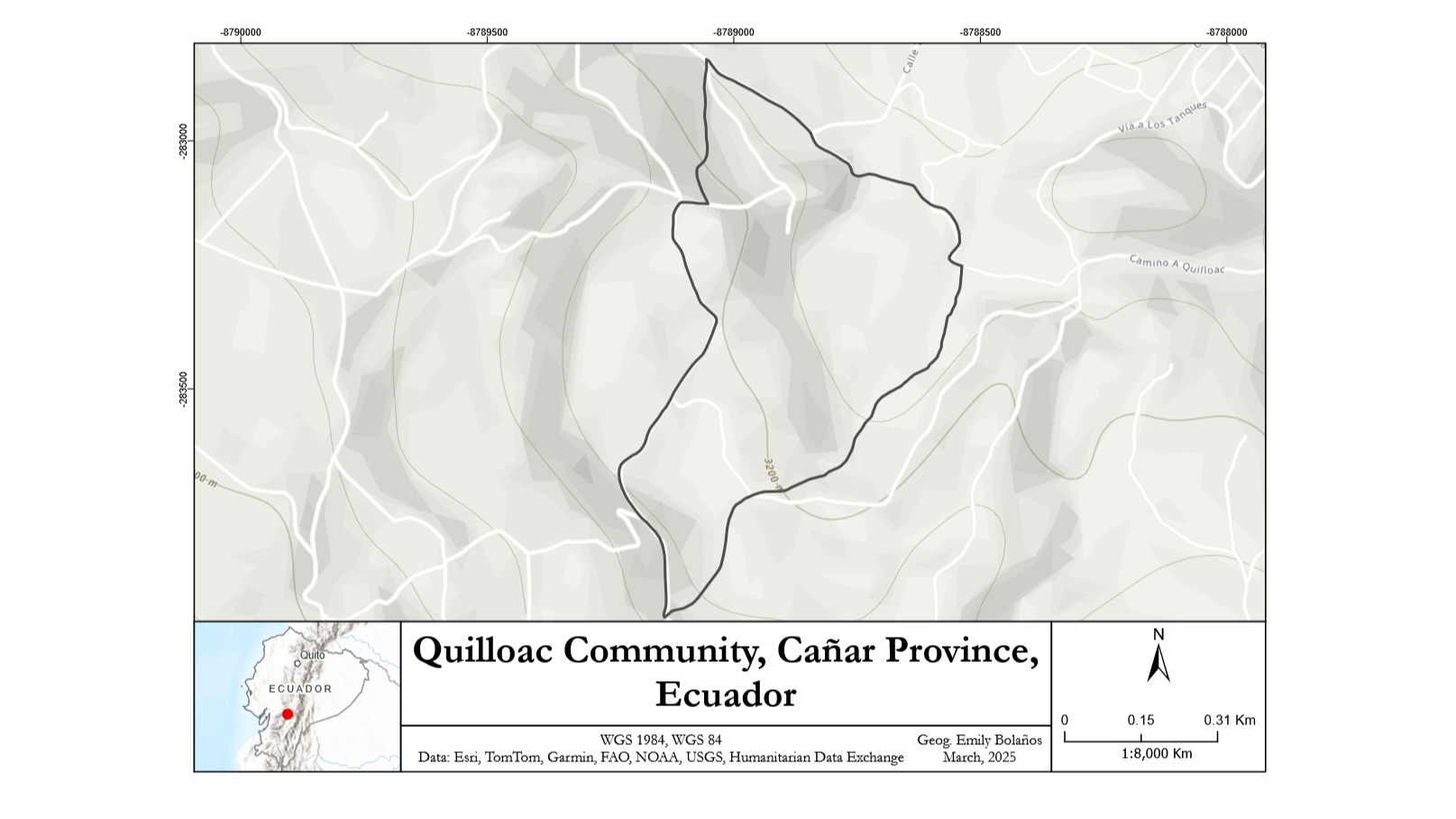Quilloac is an Indigenous community located in the Andes mountain range of Ecuador. Currently, it faces a severe shortage of potable water, primarily due to insufficient rainfall, the contamination of local water sources, and prolonged periods of drought. This situation threatens the well-being of the community and necessitates sustainable water management solutions.
Has this problem been acknowledged in the past?
No, this project was proposed by a group of Indigenous women from the Andean Quilloac community.
Can this challenge be solved using space technologies and data?
- Remote Sensing / Earth Observation Satellite Navigation
- Monitoring water availability in ancestral wells in real-time using low-cost IoT platforms such as Arduino, Map key water sources for better management and conservation with open-source geospatial tools such as Google My Map, and Optimize well management, ensuring a more reliable supply for the community implementing georeferenced data collection on user’s water consumption habits with KoboToolbox. KoboToolbox is an open-source platform for creating digital forms and collecting, managing, and analysing data—especially useful in remote or low-connectivity environments, such as the one we are working in.
- The maps to be developed for the area of interest include potential water sources, their current condition, recharge capacity, and other relevant details such as contamination or seasonal reductions in flow. The goal is to understand how accessible these sources are to the community during drought periods. Community members in the region conducted a general visual mapping of the area to identify some of these water sources during a workshop.
Expected timeframe to develop a solution
2 years
Potential consequences if no action happens
Traditional water management practices, although vital for Indigenous communities, can often face severe challenges in the context of climate change. If no action is taken to provide access to complementary technology tools, the community will continue to struggle with managing their wells. They won’t have a clear way to know how much water is available, making it difficult to plan and use water wisely. Without this information, they won’t be able to take the necessary steps to ensure a reliable water supply, which could lead to ongoing shortages and difficulties in accessing clean water.
What are additional physical requirements for a solution?
IoT sensors (already installed?), Arduino

In general, the tropical Andes in southern Ecuador is characterised by low population density and small-scale mining activities that impact water quality (Villa-Achupallas et al., 2018).
Indigenous communities in the Ecuadorian Andes, face conflicts over water due to external pressures like mining, state interventions, and water governance reforms. These communities often have customary water rights and collective management practices, which are challenged by formal policies and large-scale extractive projects (Hoogesteger & Verzijl, 2015).
Furthermore, as a consequence of climate change, the tropical Andean glaciers are retreating rapidly, affecting downstream water supply for agriculture, hydropower, and domestic use. There is a lack of high-quality, long-term hydrometeorological data, making it difficult to model future water scenarios accurately (Buytaert et al., 2009). The Andean páramo ecosystem, particularly in southern Ecuador, rainfall is highly localized and variable traditional data sources may underestimate or misrepresent rainfall (Padrón et al., 2015).
These challenges were presented by a group of Indigenous women from the Andean Quilloac community who in 2024 participated the School of Environment and Water for Women under the Rally Femenino GEOFEM® initiative, sponsored by SDG NEXUS (Justus-Liebig-Universität Giessen, 2025), and with the collaboration of FabLab IICA (Monge et al., 2023). The program seeks to strengthen women’s capacity to manage and conserve water and environmental resources within their communities. By providing technical tools and specialised knowledge, the school encourages active participation of women in environmental and water-related decision-making, promoting sustainable development and gender equity in rural areas. (UCUENCA, 2024)
To address the challenge of limited data availability, especially in high-altitude regions, which hampers understanding of local-to-regional climate interactions (Campozano et al., 2016) a project was proposed for the implementation of cost-effective water sensors (Monge, 2022) and specialised software for data collection and management.
Since the training took place, FabLab IICA has overseen follow-up activities providing ongoing technical support, expertise and additional training, which is crucial for the success of the project.






